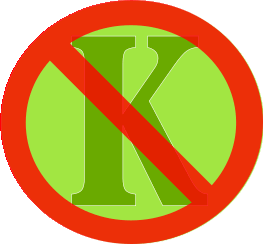WEIGHT RELATED DISORDERS HEALTH REMEDIES

Categories in Weight LossWeightBody ImageOvereating HabitsFood SecurityWeight Loss TechniquesFat LocationThyroid & MetabolismWeight Related DisordersOverviewDon't know your body type? Take our free Dosha quiz!
TAKE THE QUIZ
11 likes  SAVE SYMPTOM SAVE SYMPTOMInsulin resistance is one cause of abnormally high blood sugar levels. A kapha pacifying diet and reducing sweets / high glycemic foods in your diet will help. Exercises, and even breathing exercises (pranayama) can improve insulin uptake by... 60 likes  SAVE SYMPTOM SAVE SYMPTOMCholesterol functions to repair irritated and inflamed tissues. High cholesterol is often a kapha response to high inflammation. It also strengthens the cell wall.... 26 likes  SAVE SYMPTOM SAVE SYMPTOMHigh triglycerides indicate high fat content of the blood. Often, the best way to deal with fatty foods cravings is to find a satisfying substitute. Sweet potatoes, beans and sunflower seeds provide heaviness but won't aggravate triglyceride levels as... 60 likes  SAVE SYMPTOM SAVE SYMPTOMDiabetes Type I, is a generally a Pitta disorder where the immune system attacks and destroys insulin producing cells of the pancreas. Diabetes type II, from insulin resistance, is generally a Kapha disorder. Diabetics tend to develop thick, doughy...      (5.00 out of 5 stars) 1 rating, 81 likes (5.00 out of 5 stars) 1 rating, 81 likes SAVE SYMPTOM SAVE SYMPTOMWhat is High Blood Pressure? The concept of blood pressure is simple - it refers to the force of blood pressing against the walls of your arteries. Healthy blood pressure is around 120/80mm Hg. When your blood pressure reaches or... 50 likes  SAVE SYMPTOM SAVE SYMPTOMFatty Liver is a condition characterized by a buildup of fat (triglycerides) in the 56 likes  SAVE SYMPTOM SAVE SYMPTOMWater retention could imply poor circulation or low kidney function. Poor circulation may be due to thick, sweet Kapha blood, a heart condition, low metabolism, or other factors. 14 likes  SAVE SYMPTOM SAVE SYMPTOMCeliac disease is an allergy to wheat. Wheat intolerance (the inability to digest wheat) and wheat allergies are different even though the symptoms may be similar. In celiac disease, the immune system attacks the gluten. The symptoms are generally... 20 likes  SAVE SYMPTOM SAVE SYMPTOMFasting from dairy for several months can lead to lactose intolerance, as your body no longer produces dairy digesting enzymes. Many lactose intolerant clients report that they can eat ghee without symptoms. WEIGHT LOSS TIPS DISCLAIMER: The pathogenesis of each person's condition is unique, and so the diet must be fit to the individual and the unique root causes of the condition in your body. The information on this page is for educational purposes only and should not be used to treat a medical condition. It is not a substitute for medical care. Please check with your doctor before making any changes to your health and wellness routine. HOW AYURVEDA WORKSARE YOU WONDERING HOW AYURVEDA CAN HELP YOU?WHY IS AYURVEDA THE RIGHT SOLUTION?Ayurveda strengthens the body while opposing disorders. It takes a holistic, systemic approach that looks at the whole body. Ayurveda shows how to interpret signs and symptoms of imbalance, and how to address them using diet, lifestyle adjustments, and herbs. It shows a person how to optimize their health on a continual basis. You can't take the doctor home with you, but you can take Ayurveda home with you. Ayurveda is the most advanced and easy to use home system for self healing.HOW DOES AYURVEDA WORK?Ayurveda starts by identifying your body type, which identifies certain tendencies in your body to get sick (as well as identifying your strengths). It uses body type to determine the likely root causes of your disorders. Next, Ayurveda analyzes the nature of your disorder. It fits all your signs and symptoms into a pattern, expressed as a combination of biocharaceristics (gunas). For example, you may have a heat disorder, a cold disorder, or an oily disorder, etc. This simple categorical approach shows you how to correct systemic imbalances and strengthen your body as a whole.On Joyful Belly, we've created an extensive categorization of food so you can easily match food to your imbalanced biocharacteristics. By eating an optimal diet that balances your biocharacteristics, your whole body is strengthened and the conditions that created the disorder are removed. Once the root causes of the disease are removed, the disease lessens in strength or disappears altogether. Additional remedies - such as herbs and lifestyle practices - focused on the specific disorder, can greatly enhance your healing. GET STARTEDTo get started on your Ayurvedic journey, we first recommend that your find your body type by taking our free quiz. In Ayurveda, every solution is based on your unique body type, so by taking this quiz, you’ll get the best results. |
Join Joyful Belly.
Want our top Ayurvedic recipes and health tips?Subscribe to our free newsletter!











